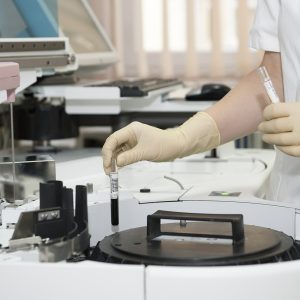Nanoscience is the study of structures and molecules on the very small scales of nanometres. The technology that utilises it in practical applications, such as devices, is called nanotechnology. This course will help you understand how nanotechnology works and where it can be applied to produce or enhance items.
This course covers the following lessons:
Lesson 1: Scope and Nature of Nanotechnology
- History of Nanotechnology
- Applications
- Food Security
- Medicine
- Energy
- Automotive
- Environment
- Electronic
- Textiles & Cosmetics
- Future
- Passive Structures
- Active Structures
- Nanosystems
- Perfect Molecular Nanosystems
- Space Elevators
Lesson 2: Atomic and Subatomic Particles
- Matter
- Forms
- Properties
- Nanoscale
- Elements
- Structure of an Atom
- Subatomic Particles
- Atom Models
- Molecules
- Chemical Bonding
- Ionic Bonds
- Covalent Bonds
- Hydrogen Bonds
- Polar Bonds
- Monomers and polymers
- Monomers
- Polymers
Lesson 3: Introduction to Quantum Mechanics
- History
- Photons – Quantisation of Light
- Atoms & Electrons
- Quantum Numbers & Orbitals
- Nuclei
Lesson 4: Types of Nanoparticles
- Carbon-Based Nanoparticles
- Ceramics Nanoparticles
- Metal Nanoparticles
- Semiconductor Nanoparticles
- Polymeric Nanoparticles
- Lipid-Based Nanoparticles
- Properties of Nanoparticles
- Electronic and Optical Properties
- Magnetic Properties
- Mechanical Properties
- Thermal Properties
- Synthesis of Nanoparticles
- Carbon Nanotubes
- Types
- Structure
- Inorganic Nanotubes
- Nanowires
- Types
Lesson 5: Nanofabrication
- Nanotubes and Nanowires
- Fabrication: Top-down method
- Etching
- Lithography
- Exfoliation
- Fabrication: Bottom-up method
- Arc Discharge
- Chemical Vapour Deposition
- Physical Vapour Deposition
- Self-Assembly
- Nucleation Growth
Lesson 6: Nanocircuitry and Semiconductors
- Types of materials
- Insulators
- Conductors
- Semiconductors
- Band Theory
- Energy diagrams
- Current in semiconductors
- Covalent bonding in silicon
- Electrons and Holes
- Types of semiconductors
- Doping
- N type semiconductor
- P type semiconductor
- PN junction
- Semiconductor devices
- Diode
- Transistor
- Applications
Lesson 7: Applications – Improving Energy Use
- Energy Sources
- Energy Conversion
- Energy Distribution
- Energy Storage
- Energy Utilisation
Lesson 8: Biomedical Applications
- Human Toxicity
- Applications
- Bioimaging
- Biosensors
- Dentistry
- Drug & Gene Delivery Using Nanotechnology
- Magnetic Hyperthermia
- Medical Devices
- Photoablation Therapy
- Sepsis
- Tissue Engineering
Lesson 9: Applications – Environment and Agriculture
- Agriculture
- Environmental Impact
- Ecotoxicology of nanoparticles
- Titanium dioxide
- Reversing Desertification
- Risk Assessment





